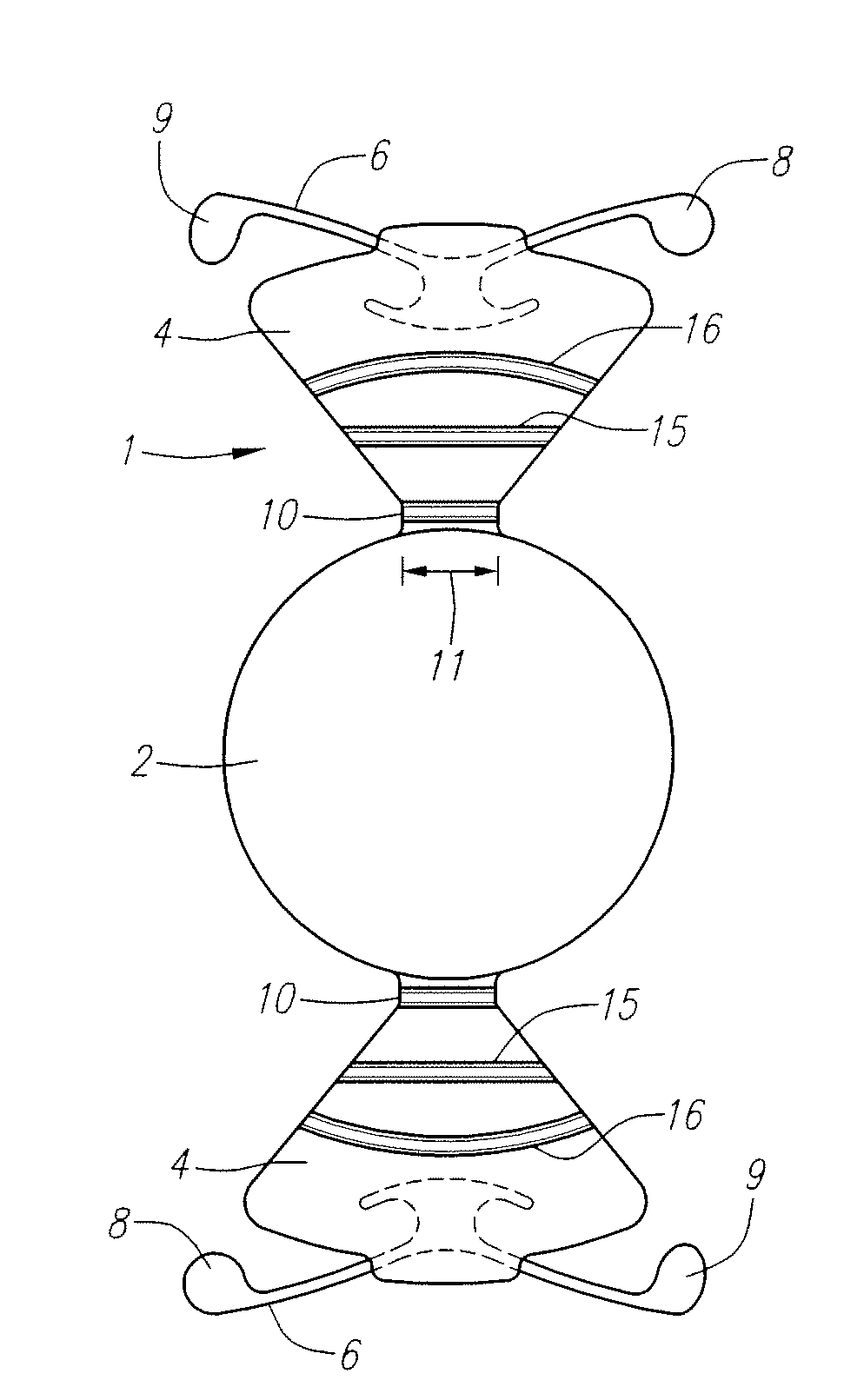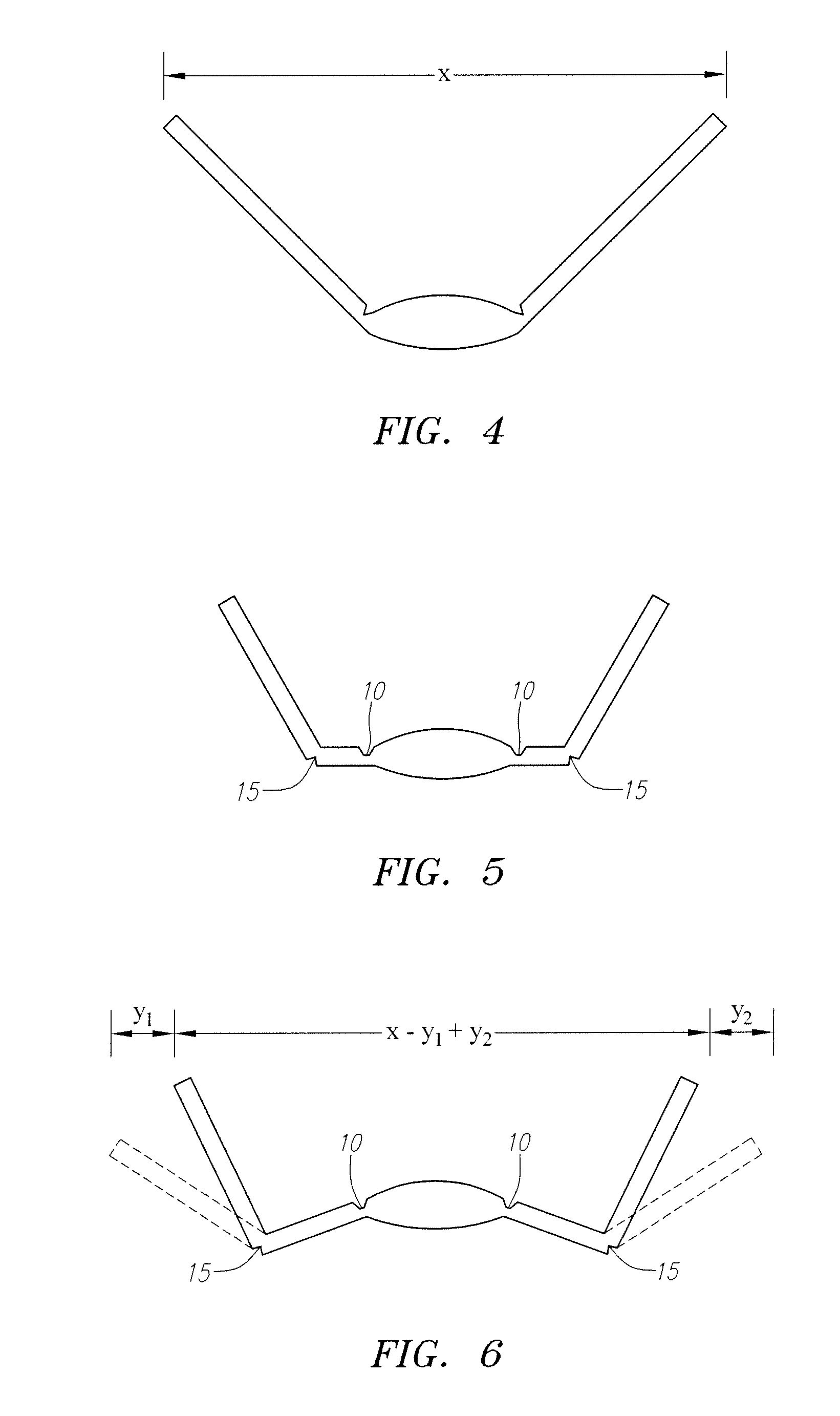"w" accommodating intraocular lens with elastic hinges
a technology of elastic hinges and hinges, which is applied in the field of "w" accommodating intraocular lenses with elastic hinges, can solve the problems of limited materials from which the lens is made, acrylic materials are incapable of multiple flexions without fracturing, and the lens could be folded but not fixed well in the capsular bag, etc., to achieve the effect of facilitating the movement of ends, and increasing the pressure in the vitreous cavity
- Summary
- Abstract
- Description
- Claims
- Application Information
AI Technical Summary
Benefits of technology
Problems solved by technology
Method used
Image
Examples
Embodiment Construction
[0025]Turning now to FIG. 1, a preferred embodiment is illustrated in detail comprising an intraocular lens 1 formed with a flexible solid optic 2 preferably made of silicone, and flexible extending portions 4 of any suitable form but preferably are silicone triangular plate haptics with narrow or wide bases adjacent to the optic or with parallel sides and which are capable of multiple flexations without damage. The optic 2 and haptics 4 preferably are uniplanar until implanted into the eye, and two or more haptics 4 extend distally from the optic 2. The haptics may be plates, loops or closed loops, and each haptic has two hinges across the plates. Fixation and centration fingers 6 as seen in FIG. 1, or loops or protuberances as seen in FIGS. 9-11 are provided at the distal ends of the hinged haptics 4.
[0026]A typical length for the lens is 10.0-12.0 mm, and the optic 2 typically is a 4.5-6.0 mm diameter optic. The fingers 6 preferably are approximately 5.0 mm wide and comprise four...
PUM
 Login to View More
Login to View More Abstract
Description
Claims
Application Information
 Login to View More
Login to View More - R&D
- Intellectual Property
- Life Sciences
- Materials
- Tech Scout
- Unparalleled Data Quality
- Higher Quality Content
- 60% Fewer Hallucinations
Browse by: Latest US Patents, China's latest patents, Technical Efficacy Thesaurus, Application Domain, Technology Topic, Popular Technical Reports.
© 2025 PatSnap. All rights reserved.Legal|Privacy policy|Modern Slavery Act Transparency Statement|Sitemap|About US| Contact US: help@patsnap.com



